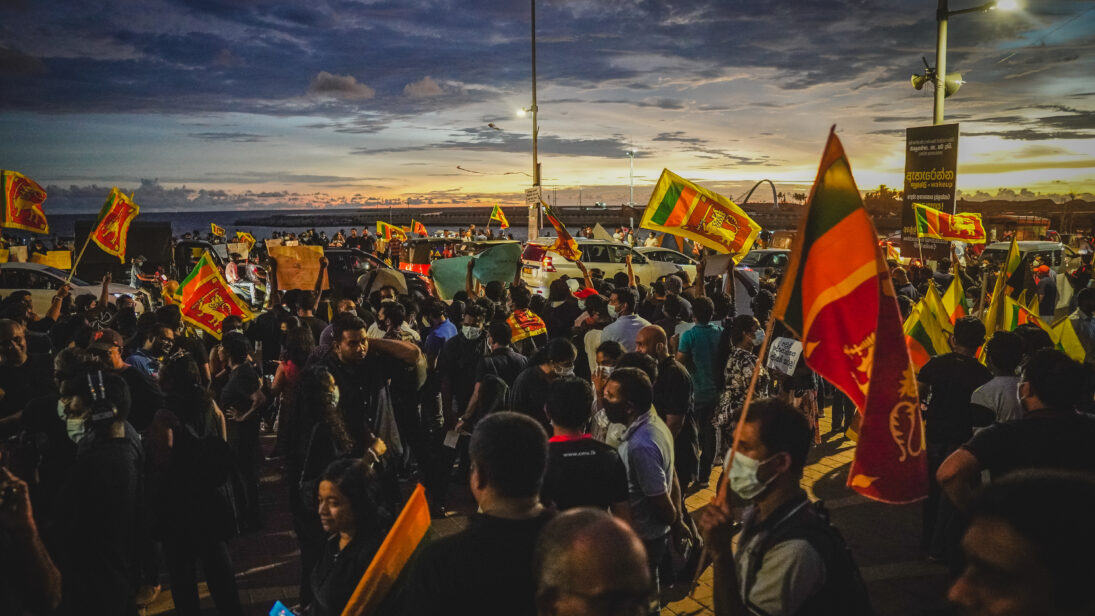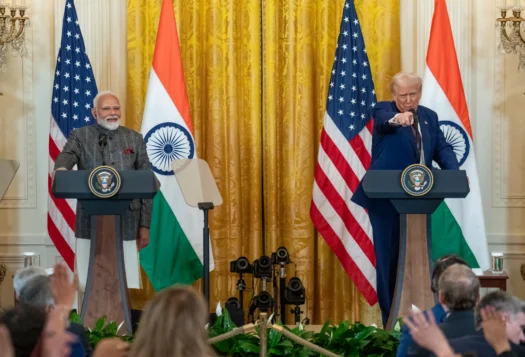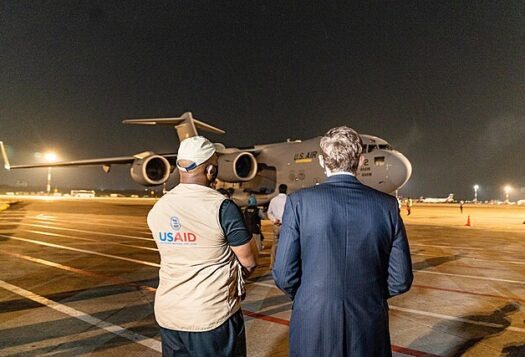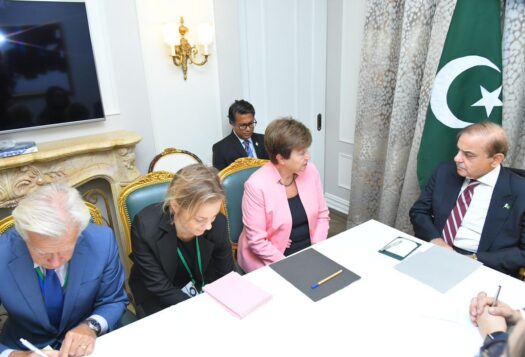
On May 16, Sri Lanka’s new Prime Minister, Ranil Wickremesinghe, declared that Sri Lanka only had enough petroleum stocks for one day. In a special statement, he outlined the island’s economic challenges in light of its first-ever sovereign default. The country has virtually no foreign exchange reserves but needs to import essential food, fuel, cooking gas, and medicines, and daily power cuts continue to cripple any economic activity. Wickremesinghe took power after Mahinda Rajapaksa—the President’s brother and former Prime Minister—was forced to resign over an attack by pro-government supporters on peaceful demonstration sites on May 9. Peaceful protests calling for the resignation of President Gotabaya Rajapaksa have been taking place across the country for months, which included an “occupy” style movement GotaGoGama (Gota Go Village) in the country’s largest city, Colombo. The attack on GotaGoGama by pro-government supporters sparked violence across the island leading to the Prime Minister’s resignation and dissolution of the Cabinet of Ministers.
This turbulent context led the Rajapaksa government to turn to an unlikely candidate for the premiership; Wickremesinghe’s return would have been unimaginable even weeks ago. A veteran rival of the Rajapaksa family’s political camp for decades, he lost the 2005 presidential elections to Mahinda Rajapaksa by an extremely narrow margin of just below 181,000 votes. Wickremesinghe appeared close to the end of his political career in 2020 when a breakaway group claimed almost the entirety of his voter-base in parliamentary elections, reducing the once-largest political party in Sri Lanka to a single seat. For most people, the new prime minister is not new at all; having first taken on the role from 1993 to 1994 and then again from 2001 to 2004 and 2015 to 2019. His previous stint in power included a dramatic 52-day absence in late 2018 where Wickremesinghe found himself ousted by his erstwhile ally then President Maithripala Sirisena in favor of bringing back Mahinda Rajapaksa as Prime Minister. The political crisis that ensued in what opponents of Rajapaksa described as a “coup” only ended when courts ruled against an unconstitutional bid to seek early parliamentary elections. Sirisena and Wickremesinghe themselves were in an unlikely alliance of parties that came together to defeat Mahinda Rajapaksa’s bid to secure an unprecedented third term as president.
Wickremesinghe’s current appointment is seen as a last-ditch attempt to bring about political stability after the main opposition parties refused to go against the central demand of the protestors. It remains to be seen whether Wickremesinghe will be able to repair public trust in the government. As the new Prime Minister attempts to push through unpopular reforms, the extent of his commitment to the International Monetary Fund (IMF) reform agenda will also be tested.
How Did Sri Lanka Get Here?
The current government under Gotabaya Rajapaksa—the former Defense Secretary during the civil war—swept into power on a platform of technocratic governance and eliminating government inefficiencies. Almost immediately after taking office, the newly elected President implemented his campaign promise to reverse the previous government’s fiscal consolidation drive by implementing massive tax cuts. The Sri Lankan economy was already shaky at best with its below-average government revenue, overreliance on International Sovereign Bonds (ISBs), and cyclical Balance of Payments crises. The COVID-19 pandemic devastated Sri Lanka’s main sources of foreign exchange earnings, especially its tourism industry. Credit rating agencies downgraded Sri Lanka in April 2020 citing the tax cuts, which left the country more vulnerable to external shocks and increased the likelihood of a sovereign default. The government’s failure to signal any recognition of an impending crisis led Citibank to title its analysis on Sri Lankan Sovereign Debt “Denial is not a Strategy” as early as December 2020.
Wickremesinghe’s current appointment is seen as a last-ditch attempt to bring about political stability after the main opposition parties refused to go against the central demand of the protestors.
In January 2022, the government went ahead with repaying a USD $500 million ISB despite calls to suspend debt payments. The then-Central Bank Governor Ajith Nivard Cabraal consistently rebuffed the need to restructure its external debt and seek assistance from the IMF. Cabraal eventually resigned, and Sri Lanka suspended external debt payments on April 12th. But for the Sri Lankan population, this was too little too late. With inflation hitting a record high of 39.5 percent in May and the rupee depreciating by 78 percent from March, Sri Lankans were barely making ends meet.

Sri Lanka has been staying afloat because of multiple credit lines, currency swaps, and trade payment deferments from China and India. While the IMF program negotiations are underway, this is only the beginning for Sri Lanka. Countries facing similar crises have taken 12 months or longer to negotiate their IMF programs, delaying their recovery and inflicting more economic pain on their populations. But Sri Lanka is missing a prerequisite for smooth IMF negotiations: stability. The IMF will be looking to work with a Sri Lankan government that has the confidence of Parliament and the trust of its people. While Wickremesinghe has former, he has not yet mustered the latter due to allegations of backroom deals and a lack of justice for the May 9th attacks.
An Unusual Partnership
On paper, Wickremesinghe and the Rajapaksas have wholly contrasting policies which could make for a difficult coalition. Wickremesinghe is seen as pro-market, a friend of India, Japan, and the United States and most importantly a proponent of entering the much needed IMF program. The Rajapaksa government, on the other hand, was vehemently against an IMF bailout till the eleventh hour. Wickremesinghe’s appointment is a significant compromise by a government that still holds a two-third majority in Parliament. As the sole Parliamentarian from his party Wickremesinghe relies entirely on the support of the ruling party’s coalition and the President, whose resignation remains a core demand of protestors. This poses a serious dilemma. Sri Lanka’s urgent and difficult economic reform agenda cannot be delayed. But the country’s political dynamics mean it will be championed by a one-seat party, backed by a deeply unpopular President.
Wickremesinghe’s appointment led to a new protest site being named “No Deal Gama” referring to a call for the end of political deal making. It is in this volatile environment that Wickremesinghe must advocate for a tough reform agenda with both the government and the public.
Given this dire need for stability, it was surprising that the Finance Minister’s portfolio remained vacant, while other Cabinet posts had been filled. The President expressed that he would keep the portfolio under him until a Minister was appointed and then gave the role to Wickremesinghe the very next day. Wickremesinghe may be the chosen champion now, but it is important to note that reforms such as the privatization of state-owned SriLankan Airlines were promised during his previous administration as well. However, the circumstances are vastly different this time around with ample space for reforms that cut state expenditure. However, unlike in his previous tenure where Wickremesinghe commanded a Parliamentary majority his mandate now lies at the discretion of the President’s party. This precarity could derail the reform agenda unless Wickremesinghe manages to build consensus in a party that was steadfastly against key IMF reforms such as fiscal consolidation and energy and fuel pricing reform.
Deal or No Deal
The mood in Sri Lanka has changed from unified calls for the President’s resignation to one asking for compromise to ensure stability. While the main opposition party will not join the government, it has pledged to support the reform agenda that the IMF program will usher in. From the outside, this may be seen as a signal for continued stability, but public distrust in the President and the ruling party persists and Wickremesinghe’s appointment has not quelled the protestors at “GotaGoGama.” Wickremesinghe’s appointment led to a new protest site being named “No Deal Gama” referring to a call for the end of political deal making. It is in this volatile environment that Wickremesinghe must advocate for a tough reform agenda with both the government and the public. The success of the Rajapaksa-Wickremesinghe partnership, however, depends on how quickly they can provide economic relief to a population demanding an entirely new political system.
***
Image 1: Nazly Ahmed via Flickr


